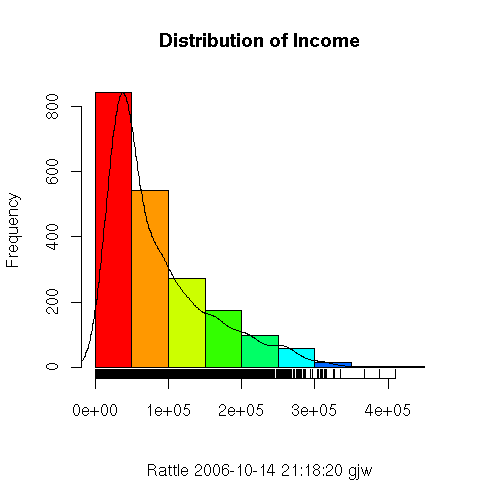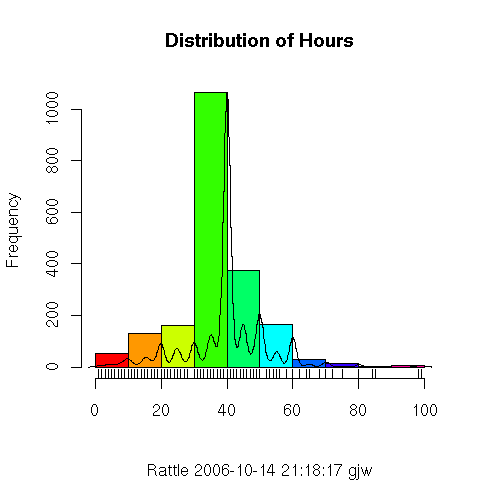
Desktop Survival Guide
by Graham Williams


|
DATA MINING
Desktop Survival Guide by Graham Williams |

|
|||
Histogram |

The plot also includes a line plot showing the so called
density estimate
and is a more accurate display of the actual (at least estimated true)
distribution of the data (the values of Income). It allows
us to see that rather than values in the range ![]() occurring
frequently, in fact there is a much smaller range (perhaps
occurring
frequently, in fact there is a much smaller range (perhaps
![]() ) that occurs very frequently.
) that occurs very frequently.
The third element of the plot is the so called rug along the bottom of the plot. The rug is a single dimension plot of the data along the number line. It is useful in seeing exactly where data points actually lay. For large collections of data with a relatively even spread of values the rug ends up being quite black, as is the case here, up to about $25,000. Above about $35,000 we can see that there is only a splattering of entities with such values. In fact, from the Summary option, using the Describe check box, we can see that the highest values are actually $36,1092.60, $38,0018.10, $39,1436.70, $40,4420.70, and $42,1362.70.

Copyright © Togaware Pty Ltd Support further development through the purchase of the PDF version of the book.